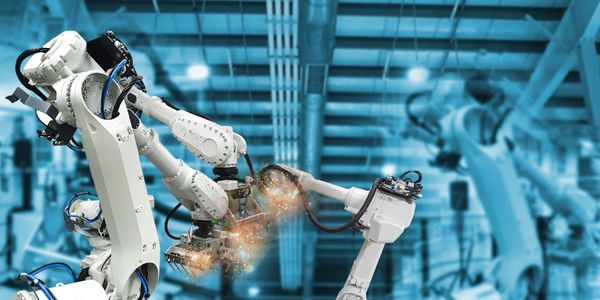Download PDF
Optimizing Brake System Performance through Co-simulation: A Case Study by Ankers
Technology Category
- Sensors - Infrared Sensors
- Sensors - Thermal Conductivity Sensors
Applicable Industries
- Automotive
- Equipment & Machinery
Applicable Functions
- Product Research & Development
Use Cases
- Virtual Prototyping & Product Testing
- Virtual Reality
Services
- System Integration
The Challenge
Ankers, a company that provides simulation, design, and development services for automotive OEMs and tier one suppliers, was faced with the challenge of determining the thermal influence of brake disks and brake pads on the braking distance of a vehicle. The frictional heat generated by brakes when decelerating a vehicle can have various negative effects on the brake system, including thermal cracks in the brake disks, premature wear or brake failure, and an increased braking distance due to changing friction coefficients at higher temperatures. The goal was to optimize system behavior by understanding and mitigating these effects. The challenge was to show that simulation results would be more accurate when considering the thermal effects via co-simulation and to demonstrate the company's co-simulation competences to its existing and future automotive customers.
About The Customer
Ankers is a company that supports its customers in the development of new products by providing simulation, design, and development services. The company specializes in special car development from scratch including electrical and ICE vehicles, one off super cars, and race cars for several European and Chinese automotive OEMs and tier one suppliers. Ankers' engineers aim to be at the forefront of technology and are using state of the art tools and development methods. One of their chosen tool sets is the Altair's HyperWorks suite, with which Ankers' simulation team has been working since its foundation in 2014. The tools have been used in numerous simulation and development projects, among others for structural analysis and optimization tasks.
The Solution
Ankers used a co-simulation approach, applying MotionView, the multibody dynamics tool of the HyperWorks suite, and solidThinking Activate, a solution to simulate and optimize multi-disciplinary systems using a 1D approach. The models used in this study were a full vehicle model and a model of the brake system, comprising of the brake disk and the brake pad. Both models were created in MotionView, using some of the various system templates the software offers via its vehicle library. To include the thermal influence caused by the energy conversion during braking, the multi-body system was co-simulated with Activate. This allowed the engineers to study the influence of the temperature due to the disk-pad contact on the braking distance. The co-simulated model was set up in MotionView (multi-body system plus advanced driver) and solidThinking Activate (friction-thermal dependent model).
Operational Impact
Quantitative Benefit
Related Case Studies.

Case Study
Smart Water Filtration Systems
Before working with Ayla Networks, Ozner was already using cloud connectivity to identify and solve water-filtration system malfunctions as well as to monitor filter cartridges for replacements.But, in June 2015, Ozner executives talked with Ayla about how the company might further improve its water systems with IoT technology. They liked what they heard from Ayla, but the executives needed to be sure that Ayla’s Agile IoT Platform provided the security and reliability Ozner required.

Case Study
IoT enabled Fleet Management with MindSphere
In view of growing competition, Gämmerler had a strong need to remain competitive via process optimization, reliability and gentle handling of printed products, even at highest press speeds. In addition, a digitalization initiative also included developing a key differentiation via data-driven services offers.

Case Study
Predictive Maintenance for Industrial Chillers
For global leaders in the industrial chiller manufacturing, reliability of the entire production process is of the utmost importance. Chillers are refrigeration systems that produce ice water to provide cooling for a process or industrial application. One of those leaders sought a way to respond to asset performance issues, even before they occur. The intelligence to guarantee maximum reliability of cooling devices is embedded (pre-alarming). A pre-alarming phase means that the cooling device still works, but symptoms may appear, telling manufacturers that a failure is likely to occur in the near future. Chillers who are not internet connected at that moment, provide little insight in this pre-alarming phase.

Case Study
Premium Appliance Producer Innovates with Internet of Everything
Sub-Zero faced the largest product launch in the company’s history:It wanted to launch 60 new products as scheduled while simultaneously opening a new “greenfield” production facility, yet still adhering to stringent quality requirements and manage issues from new supply-chain partners. A the same time, it wanted to increase staff productivity time and collaboration while reducing travel and costs.

Case Study
Integration of PLC with IoT for Bosch Rexroth
The application arises from the need to monitor and anticipate the problems of one or more machines managed by a PLC. These problems, often resulting from the accumulation over time of small discrepancies, require, when they occur, ex post technical operations maintenance.

Case Study
Robot Saves Money and Time for US Custom Molding Company
Injection Technology (Itech) is a custom molder for a variety of clients that require precision plastic parts for such products as electric meter covers, dental appliance cases and spools. With 95 employees operating 23 molding machines in a 30,000 square foot plant, Itech wanted to reduce man hours and increase efficiency.





